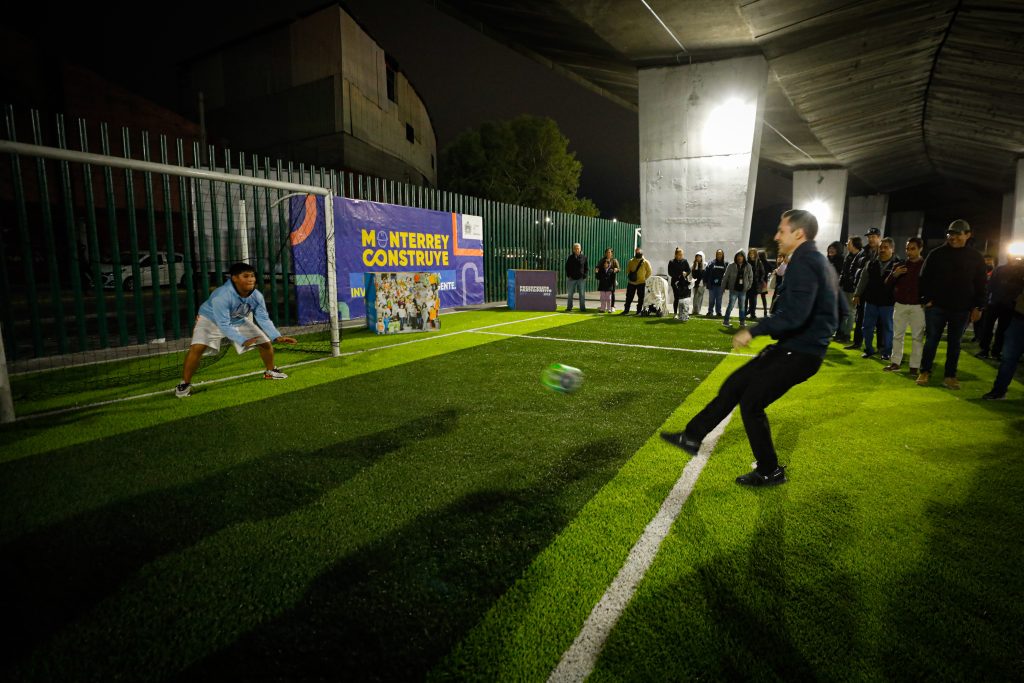Monterrey, Mexico
Improving Quality of Life Through a Data-Driven, Resident-Oriented Municipal Budget
Project Type:
Community Engagement, Equity, Health and Wellbeing, Technology
At a Glance
5% of the City’s annual real estate tax is allocated to projects proposed by residents through the Participatory Budget.
10,254 of votes cast by residents in 2023 for participatory budget proposals in 2023—five times higher than votes cast in 2022.
313 project proposals submitted by residents for the 2024 participatory budgeting round.
30 projects funded in 2023.
In late October 2023, Monterrey residents and city leaders gathered at the Rube Bridge in the Bella Vista neighborhood to celebrate a resident-led transformation. A once nondescript concrete underpass, which many neighbors avoided due to open-air drug use and loitering, was inaugurated as a recreational space featuring a soccer field, basketball and tennis courts, modern lighting and benches. Plans for security cameras, a playground and murals are in the works.
This revitalization is the result of the City of Monterrey’s participatory budgeting (PB) program, which allocates five percent of annual property tax receipts to fund resident proposals each year. Launched in 2022, the proposal is part of the city’s growing commitment to collaborative government and data-driven decision making.
Here’s how it worked:
- A resident of the Bella Vista neighborhood submitted a proposal to revitalize the bridge underpass.
- The City approved the proposal and included it on the ballot.
- Voters approved related proposals in 2022 and 2023.
- Bella Vista neighbors formed a committee to review construction project bids and monitor work site progress. (The commitment to this project from Bella Vista residents is remarkable—residents helped keep construction materials secure by sleeping at the construction site.)

Residents are clearly powering Monterrey’s participatory budgeting process—and behind the scenes, so is data. To ensure that wealthy enclaves don’t receive a disproportionate amount of funding, the City divided Monterrey into 30 sectors based on their respective socioeconomic conditions. It then prioritized funding projects in vulnerable areas. Additionally, the amount of funds made available to a particular proposal depends on four factors: the number of inhabitants of the area, the correct payment of property taxes, the level of segregation and the amount of active neighborhood councils in a sector. All proposals put up for vote must also meet technical and legal requirements, as well as being aligned to the City’s strategic goals.
One signal of the PB program’s success? Its growing popularity. In 2022, residents proposed 265 projects, of which 160 were accepted by the City; 2,452 residents ultimately approved 30 to receive funding. Last year, the City received 280 proposals, with 172 deemed feasible and 30 selected by voters. More than four times as many people (10,254) voted on those projects, thanks in part to a city communications campaign that drew on results from a performance analysis of the PB program’s first year.
Today, with civically active residents and an administration that routinely uses data to identify and prioritize local needs, progress is happening in Monterrey. Across the city—the first in Mexico to earn What Works Cities Certification—public spaces are being rehabilitated and reforested, and mobility infrastructure is being made safer. This is what smart, open government looks like in action.
“By having transparency mechanisms in place so citizens can understand how we use resources and make decisions with data, we’re promoting collaboration between society and government. It’s about being able to understand and recognize what can be improved. If we don’t listen to citizens, we lose a fundamental way to keep growing and improving.”

“As leaders we have to make decisions every day, otherwise things can fall apart. Whatever our intentions, data helps us know what to do. When you have data, you know you are making a good decision.”
30 resident-proposed projects funded by participatory budgeting